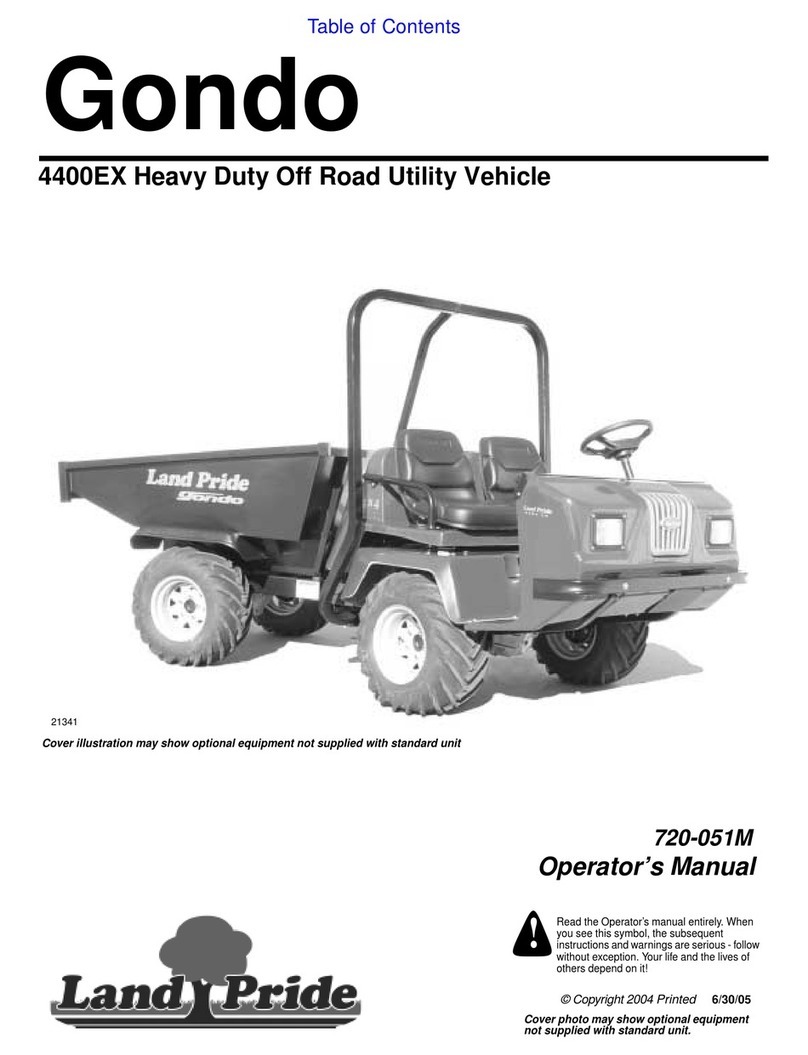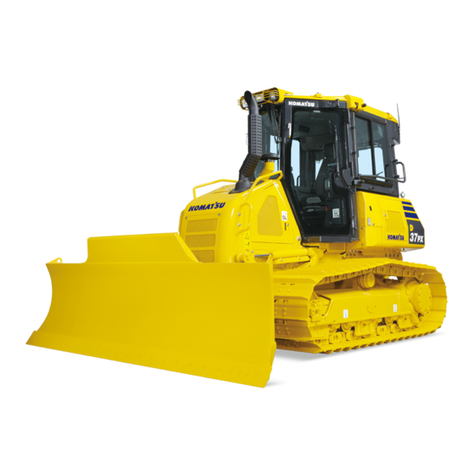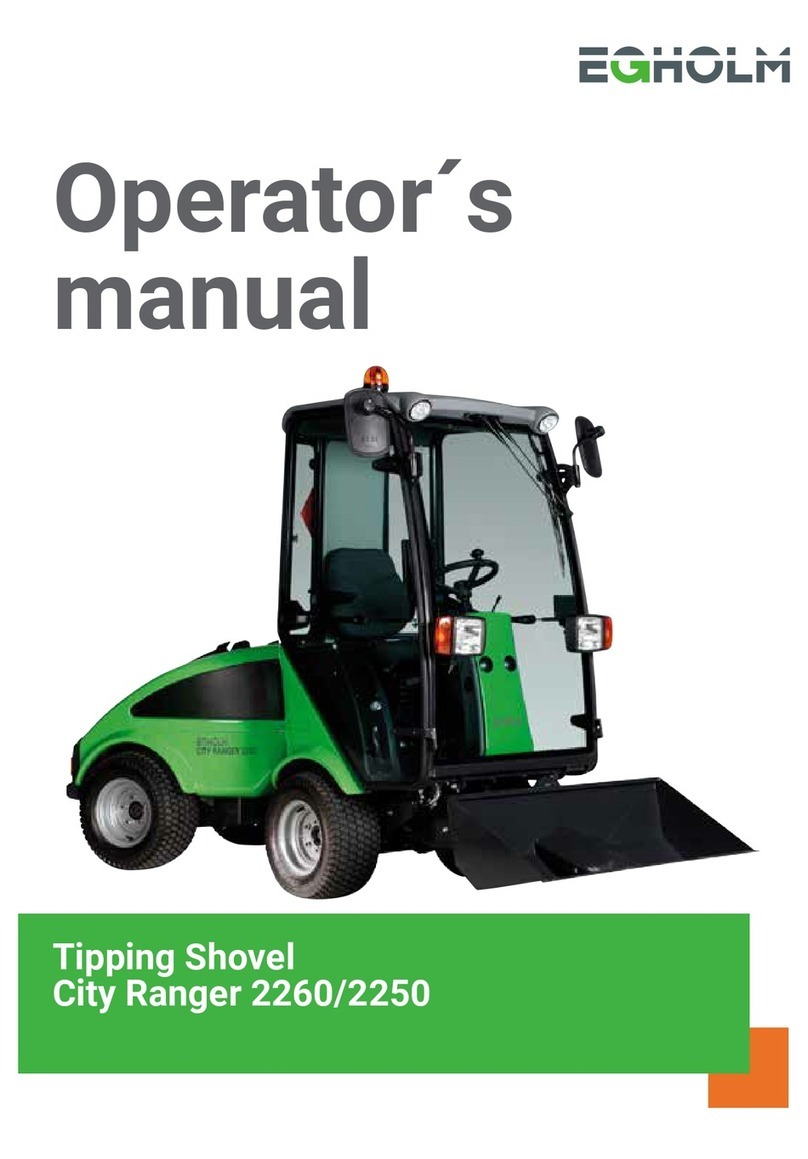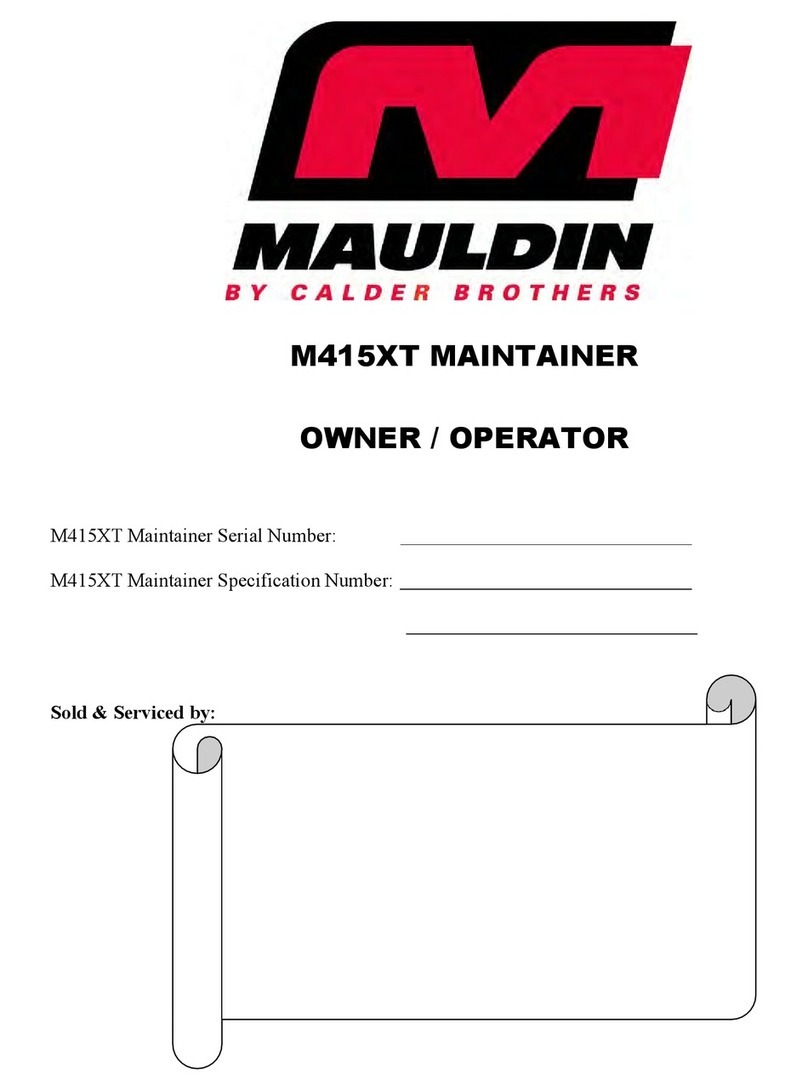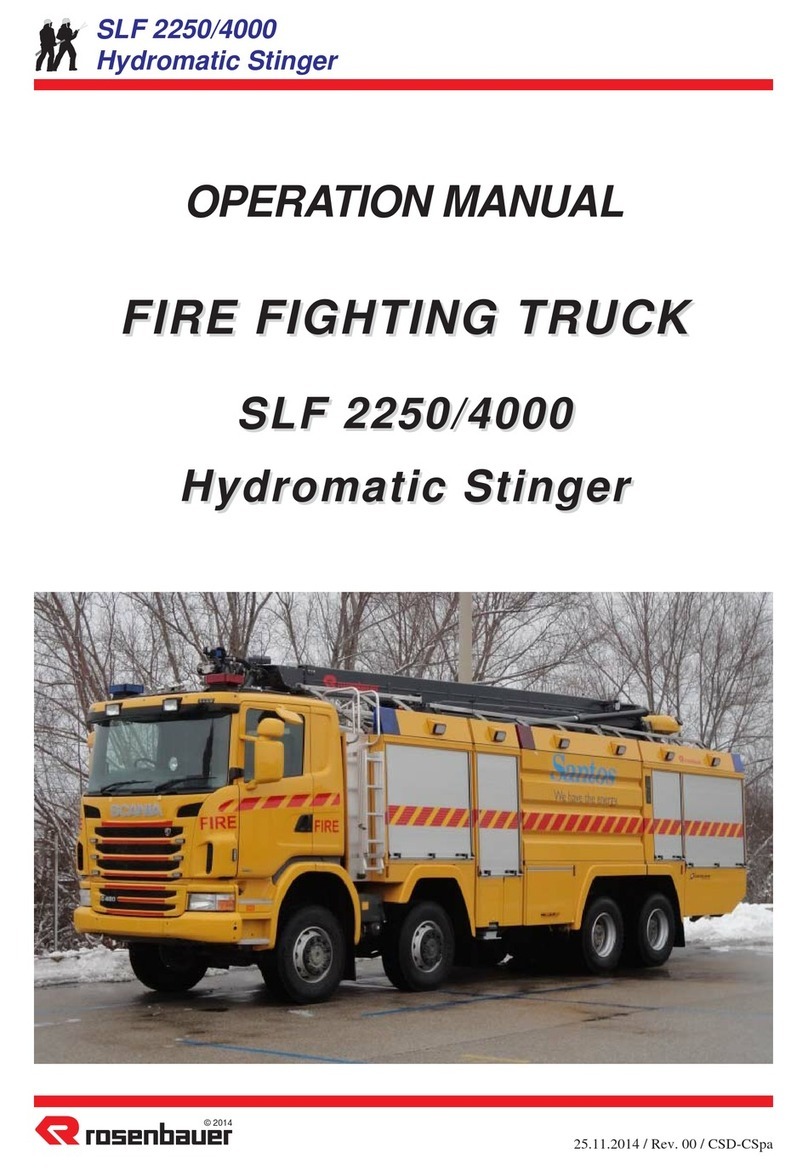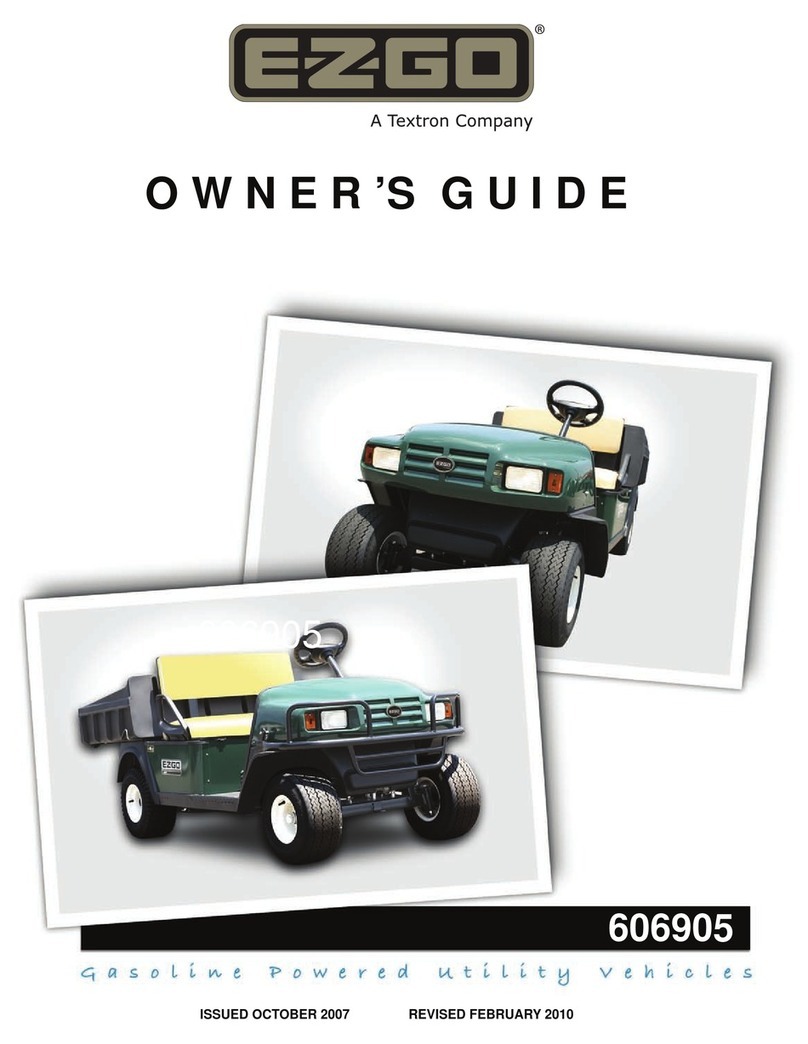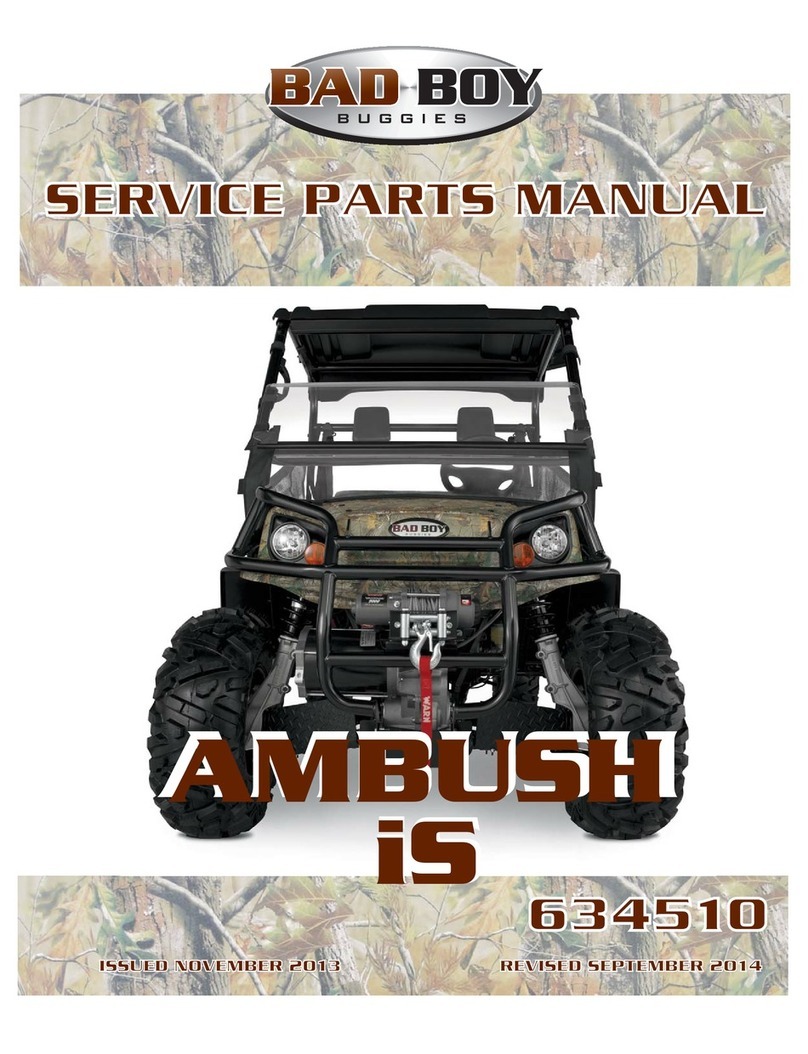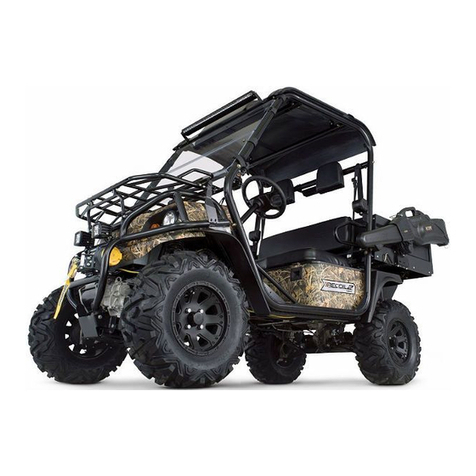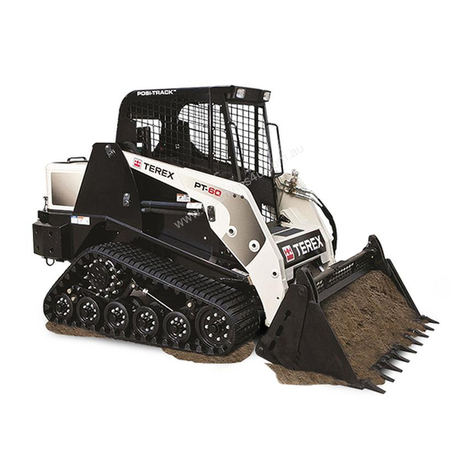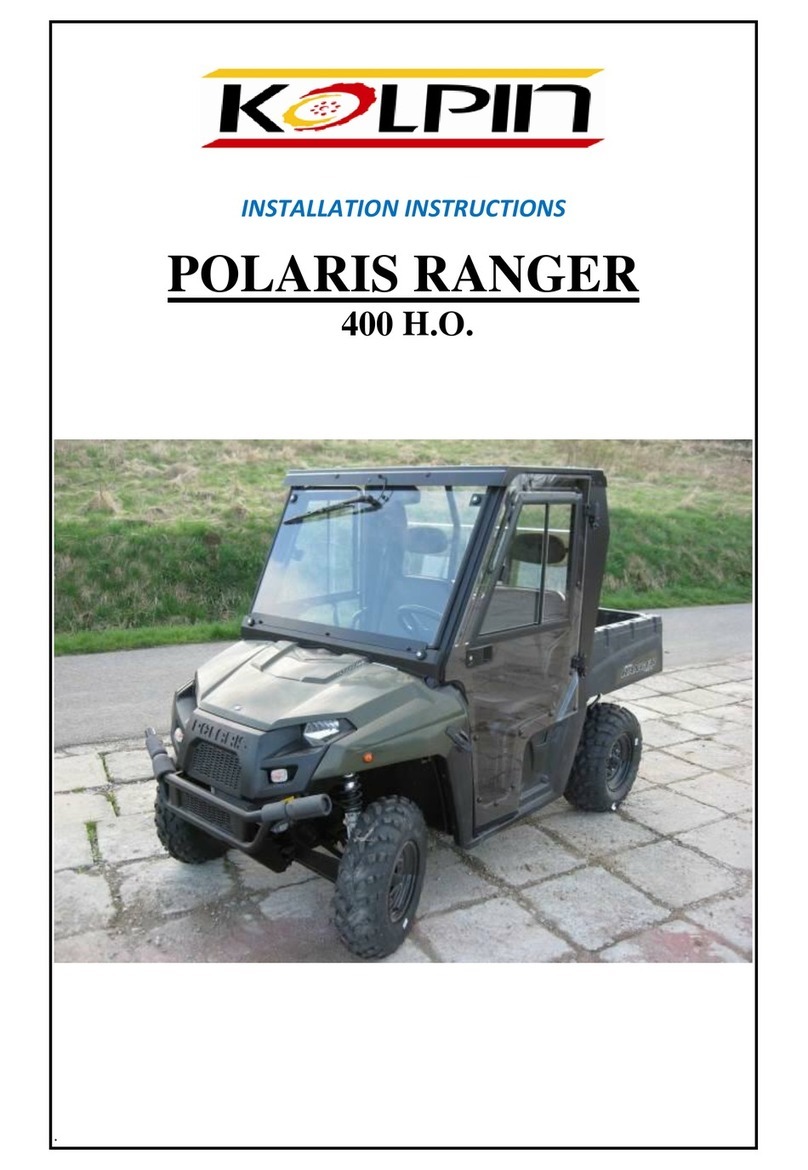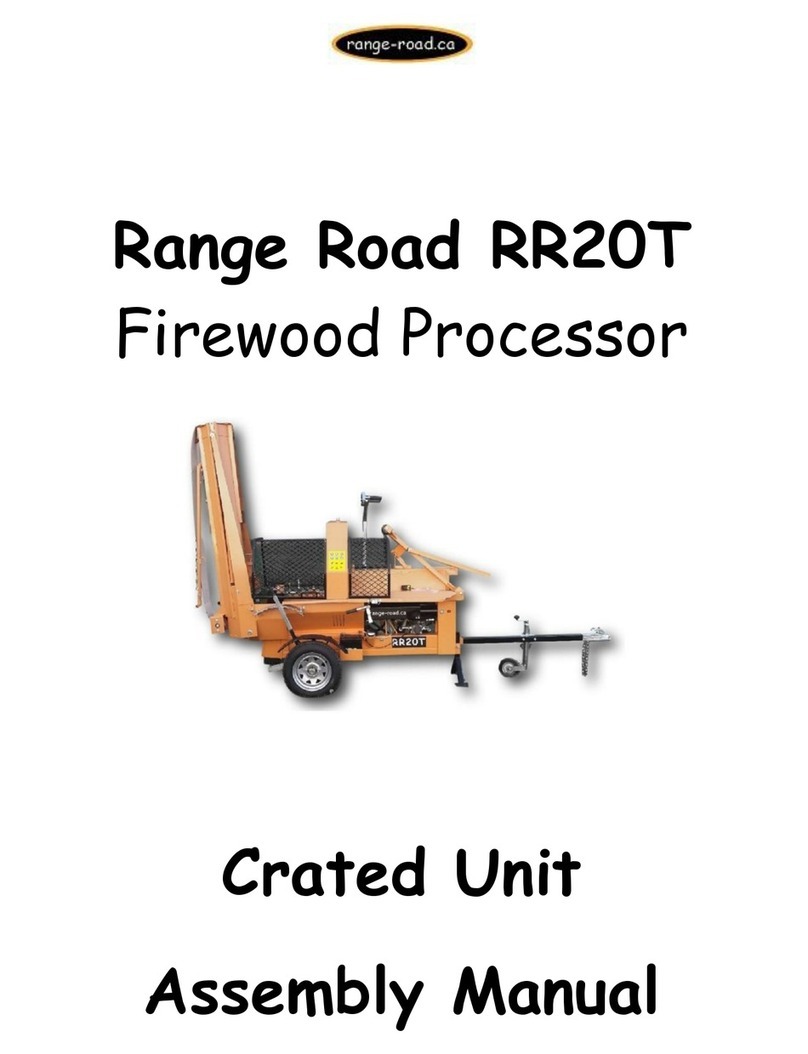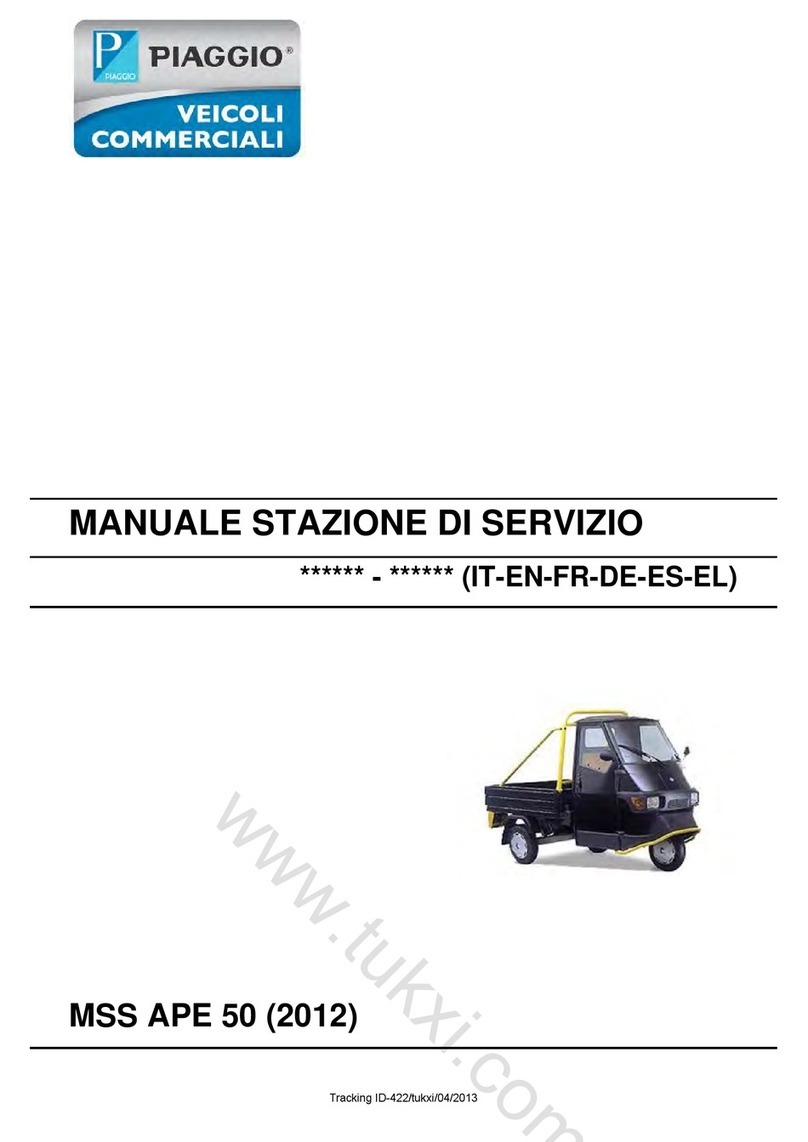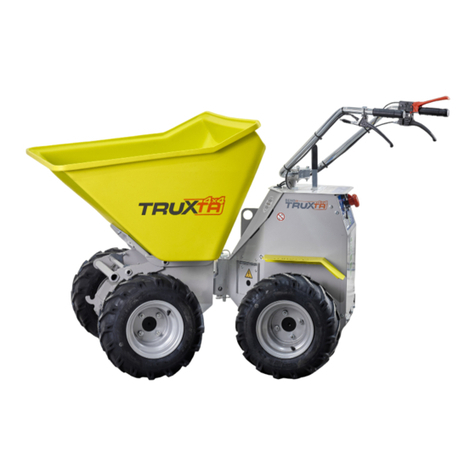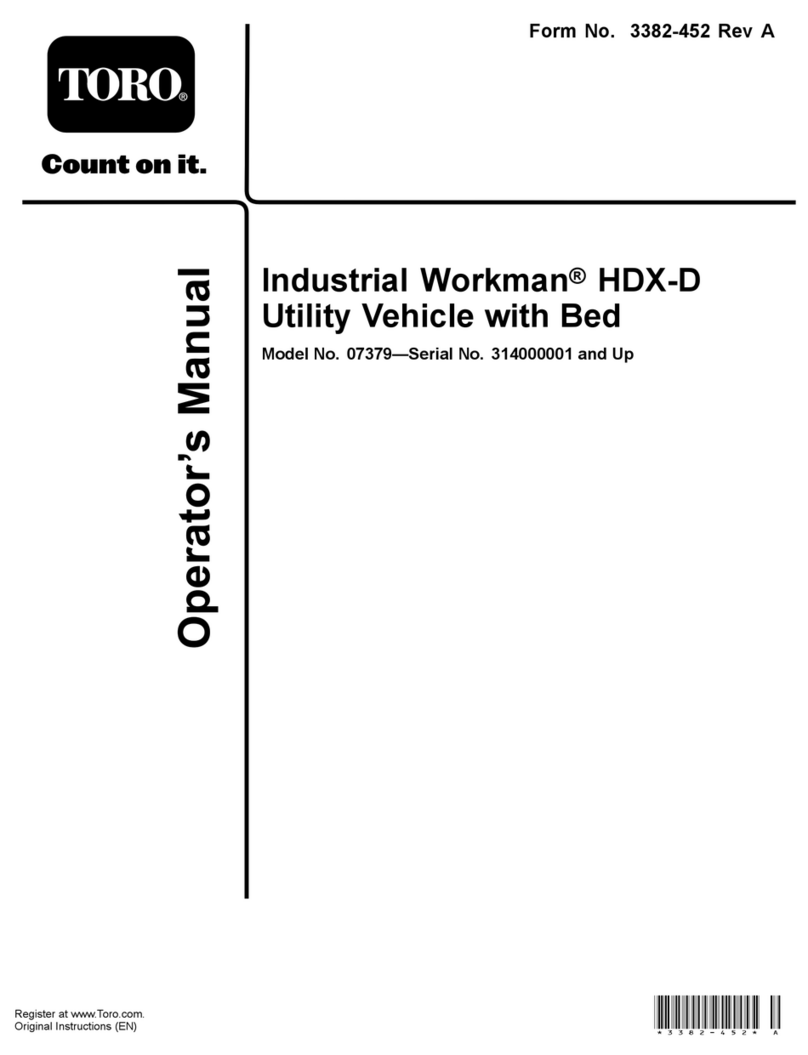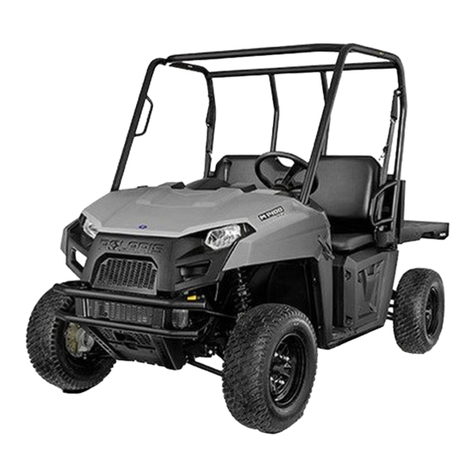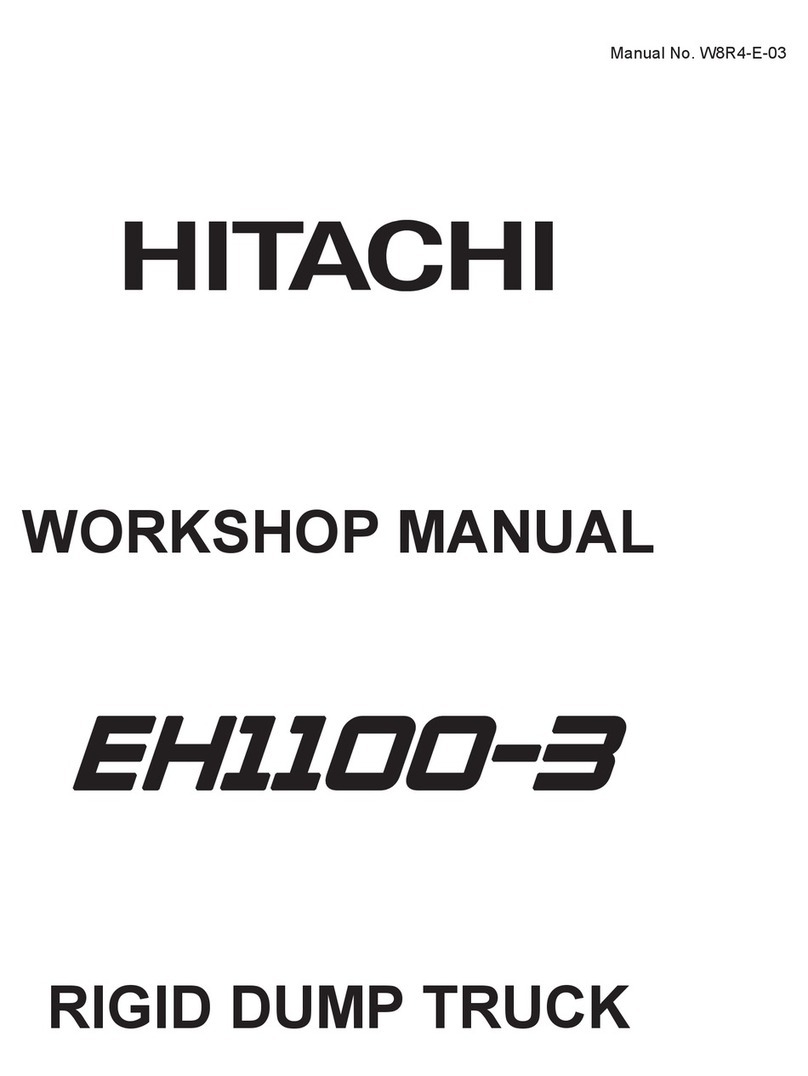Thwaites MACH 2257 Assembly instructions

5 - 9 Tonne
Operator’s
Instruction
Manual
Thwaites Limited
T0613 Issue 1
MACH 2257, 2263, 2264,
2265, 2266, 2290, 2297, 2298.

1Introduction
Safety symbols
• Attention!
• Be alert!
• Your safety is involved!
• Correct action • Incorrect action/procedure
which should NOT be carried
out
Signal words
Signal words are used on the machine and within this manual to identify levels of hazard seriousness:
DANGER WARNING CAUTION
Thwaites Limited puts Safety First
It is the policy of Thwaites Limited to promote safety in the
operation of its machines and to create a general awareness
of site safety and safe working practices for the operators of its
machines.
This Operator’s Instruction Manual is intended for both new
and experienced machine operators. It should remain with the
machine at all times. All operators should be aware of its location
and contents.
It is important that all operators are fully trained and familiar
with the machine and that they have read and understood the
information contained within this book, before they attempt
to operate in the site conditions for which the machine was
designed.
This book details practices and operations which Thwaites Limited
recommends. DO NOT operate this machine in ways other than
those detailed within this book.
This machine is designed for customary construction site
operations, and the transportation of bulk materials commonly
carried on such sites; that is their ‘intended use’. Under certain
controlled conditions the dumper may be used for towing
wheeled loads.
Due to the varied nature of the operation of site dumpers and
the absence of an agreed test standard, any gures quoted by
Thwaites in relation to vibration values and exposure are for
reference purposes only. It is the responsibility of the employer
to assess vibration exposure based on the actual site conditions,
and operating practices, at the point of use.
Hand Arm Vibration - The daily exposure Action/Limit Values
of between 2.5 - 5.0m/s-2 (A8) are unlikely to be exceeded in an
eight-hour reference period.
Whole Body Vibration - The daily exposure can only be accurately
determined at the point of use. This exposure must be managed
in respect of the Action/Limit Values of 0.5 and 1.15 m/s-2 (A8)
respectively.
Employers should not rely solely on published vibration gures
when undertaking risk assessments. Depending on the site
conditions, cycle times may need to be adjusted in order to
reduce operator exposure levels.
Vibration values based on typical duty cycles are available
on request from Thwaites. These may be used for reference
purposes only.

Complete checks in section before starting the engine
1
Read operator’s instruction manual
Before operating this machine
1. Contact your Thwaites representative in case of
further questions
2. Learn to operate this machine
3. Ensure you are t to operate
4. Wear correct safety clothing and ensure that safety
equipment is available
Distributor

514
1
51
61
61
20% max 25% max25% max 16% max
20% max 16% max
4
1
25% max
A
B C
D
E
F
G
H
J
K
L
MN
P
R
S
514
1
51
20% max 25% max25% max
20% max
4
1
25% max
51
20% max
51
20% max
1
Complete checks in section before starting the engine
Safety label identication

Complete checks in section before starting the engine
1
Item Description Qty
A Gradient Front Tip - Read the operator's manual
before working on gradients 1
B Stability hazard - Do not discharge load when
working on sloping ground 1
C Gradient Powerswivel - Read the operator's
manual before working on gradients 1
D Warning roll over protective structure (ROPS) -
Never modify structure 1
E Warning - Read the operator's manual before
towing a trailer 1
F Crushing of whole body - Never work under an
unpropped skip 2
G Warning lift point - Read the operator's manual
before lifting the machine 1
H Crushing of whole body - Stay a safe distance
from articulation area 2
Safety labels
The safety labels tted to these machines are to warn the operator or bystanders of possible hazards.
• Be sure you fully understand the content and position of the labels.
• Ensure labels are clean and in good condition, do not clean labels with solvents.
• Replace lost or damaged safety labels.
There are also other labels in addition to the safety labels, handle these labels in the same way.
Orientation of labels may vary from those shown.
Item Description Qty
J Warning - Read the operator's manual before you
operate the machine 1
K Warning - Do not stand or step in this area 2
L Crushing hazard due to machine roll over - Always
wear seat belt 1
M Warning engine maintenance - Read the service
manual before working on the machine 1
NWarning severing of nger or hand - Keep hands
a safe distance from rotating parts (under engine
cover)
2
P Electrical shock - Do not use pressure washer on
electrical items (under engine cover) 1
R Hot surface - Keep hands a safe distance from
hazard (under engine cover) 1
SWarning hot uid under pressure - Read the
operator's manual (under engine cover) 1
Safety label identication

1
Complete checks in section before starting the engine
Walk around the machine
Visually check the machine
1 Are the chassis lock and the skip lock disengaged?
2 Are the controls, crush zone or hydraulic rams
clean, and clear of any debris?
3 Is the Roll-Over Protective frame (ROPS frame)
secure, fully upright and undamaged?
4 Is the seatbelt anchorage secure and serviceable?
5 Are the covers and mudguards secure?
6 Are the hoses free from uid leaks?
7 Are all safety decals legible?
8 Are the tyres free of cuts or splits?
9 Are all bolts tight and in position?
10 Are there uid leaks under the machine?
11 Is there exhaust system damage?
12 Are the steering wheel and the steering column
undamaged?
13 Have the daily maintenance tasks been performed?
(See section 5)
Report all faults immediately.
Before operating this machine
DO NOT OPERATE THE MACHINE UNTIL
ALL FAULTS HAVE BEEN RECTIFIED
Incorrect tyre pressures reduce machine stability.
WARNING

1
Complete checks in section before starting the engine
Mount the machine and check the controls
1 Use the grabrails and foot steps provided to
manoeuvre into seating position. Face the machine
at all times when mounting and dismounting
2 Is the engine cover secure and locked?
3 Adjust the seat position for comfort and easy
access to controls
4 Fasten the seat belt. Adjust accordingly for safety
and comfort
5 Is the hand brake ON?
6 Set the transmission to neutral
7 Does the foot brake feel rm?
8 Do not operate the machine without understanding
all its controls as described in the following pages
A seatbelt MUST BE WORN when operating machines
tted with a ROPS frame
WARNING
Before operating this machine

1 2 3 4
5
6
7
8
9
10
11
12
1314
15
16
17
18
19
20
21
22
23
1
Complete checks in section before starting the engine
Control locations and functions
1. Speedometer*
2. Forward/Neutral/Reverse lever
(Includes gear selection Powershift only)
3. Steering wheel
4. Camera monitor
5. Display unit
6. Hazard warning light switch*
7. Blank
8. Footbrake pedal
9. Throttle pedal
10. Gear lever (Powershuttle only)
11. Handbrake lever
12. Battery isolator
13. Engine control unit
14. Diagnostic plug
15. Power distribution board
16. Bucket control lever
17. Dump valve pedal
18. Ignition switch
19. Warning buzzer
20. Regeneration switch
21. Light switch*
22. Indicator switch*
23. Horn push
* Optional items
Layout of controls

2 3 4 5 6 7 8
9
19
20
21
22
10
11
12 13 14 15 16 17
18
1
23
1
Complete checks in section before starting the engine
Warning light location and functions
Warning light location and function
1. Battery charging
2. Hand brake
3. Seat belt
4. Cold start pre-heat in operation
5. Neutral
6. Low fuel
7. Lights
8. Direction indicators
9. Air lter blocked or water in fuel or low fuel pressure
10. Low brake oil level
11. DPF Regeneration required
12. Warning air boost pressure or air temperature high
13. Engine oil pressure
14. Engine Warning Lamp
15. Transmission oil temperature
16. Transmission oil pressure
17. DPF Ash load limit reached
18. Selective Catalytic Reduction (SCR) System fault
(Not applicable to these machines)
Multi function display
19. Engine rpm
20. Engine temperature
21. Hourmeter
22. Fuel level
23. Fault codes (Refer to Control functions in depth Section 1)

Flasher unit
F1 F2
F3 F4 F5 F6 F7 F8 F9 F10 F11 F12 F13 F14 F15 F16 F17 F18 F18 F20 F21 F22 F23
F24 F25 F26
Fuse
TEST
D2
D1
BF1 BF2
R1 R2 R3 R4 R5 R6 R7 R8 R9
R12
R13
R10
R11
1
Complete checks in section before starting the engine
Power distribution board layout

1
Complete checks in section before starting the engine
Fuse No. Rating Function
F1 5A Side lights LH
F2 5A Side lights RH
F3 10A Side lights
F4 10A Hazard lights
F5 20A Fuel pump
F6 20A Ignition switch
F7 3A Display unit
F8 10A Spare #6 - Battery
F9 10A Spare #5 - Battery
F10 10A Spare #4 - Battery
F11 3A Camera system
F12 10A DRL and Headlights
F13 10A Indicators and Brakelights
F14 10A Amber beacon
F15 10A Horn
F16 3A Speedometer
F17 10A Spare #2 - Ignition
F18 3A Display unit
F19 10A Transmission
F20 10A Engine diagnostics
F21 10A Spare #1 - Ignition
F22 10A Motion Inhibit system
F23 10A Handbrake switch/Fuel level/Regen switch/
Warning buzzer
F24 30A Engine ECU
F25 30A SCR system
F26 5A Engine after-run
BF1 100A Ignition circuit feed
BF2 100A Glow plug feed
Fuse Table Relay Table
Relay No. Function
R1 DRL
R2 Fuel pump
R3 Neutral start
R4 SPARE
R5 Motion inhibit - Drive (if tted)
R6 Drive
R7 Seatbelt green beacon (if tted)
R8 Motion inhibit - Latch (if tted)
R9 Safety
R10 Timer Relay - After-run control
R11 Engine ECU control
R12 Ignition circuit feed-KL15
R13 Glow plugs
Flasher unit LED asher unit
Power distribution board layout
Diode Table
Diode No. Function
D1 ECU control system
D2 Motion Inhibit system

1
Complete checks in section before starting the engine
Seatbelt
• Adjust length of belt when seated
• Press buckle blade into buckle lock
• Pull belt webbing through buckle blade to remove slack.
Seatbelt should not be worn loose. It should pass comfortably across hip
bones and not the abdomen.
When optional electric seatbelt is fitted, machine will not move if buckle
is not inserted into the lock.
Throttle pedal - right foot
• Apply pressure to increase speed
• Release pressure to reduce speed
Foot brake - right foot
Apply pressure to slow or stop the machine
Dump valve pedal - left foot
Press down before each gear change - select gear, then release.
Seat adjustment
A – Turn knob to set driver weight
B – Lift to slide seat assembly forwards/backwards
C – Lift handle to adjust backrest
Control functions - in depth

1
Complete checks in section before starting the engine
Control functions - in depth
Forward/neutral/reverse lever (FNR lever) (powershuttle)
• Push forwards to travel in a forward direction
• Lever centred = neutral
• Pull back to travel in a reverse direction
If green beacon option is fitted seat belt must be buckled for lever to
function
Hand brake lever - right hand
• Use only when the machine is stationary (or in an emergency)
• Pull lever back to apply, lift collar pull back and releace collar to lock.
• Lift collar and lever will move forward to release.
An audible warning device is fitted to your machine. This will sound if the
parking brake is engaged whilst forward or reverse is selected and machine
will not move.
Gear lever (powershift)
• Up changes - anti-clockwise selects gears 1 to 4
• Down changes - clockwise selects gears 4 to 1
Warning - Overspeed time delay sensor fitted
Gear lever (powershuttle only) - left hand
forward-left forward-right
rst gear third gear
neutral
back-left back-right
second gear fourth gear

1
Complete checks in section before starting the engine
Tipping control lever (front tip models) - left hand
• Push forward to raise skip
• Push backward to lower skip
Tipping control lever (powerswivel models) - left hand
• Raise skip 100 mm (4”) to disengage pivot centring lock
• Rotate skip to a central position (fully lowered) to automatically
engage centring lock
• Raise skip and push lever to the right to rotate skip clockwise
• Raise skip and push lever to the left to rotate skip anti-clockwise
• Increased engine speed reduces cycle times
Movement of the bucket is disabled if the steering wheel is moved (steering
is given priority)
Steering wheel - both hands
• Turn the wheel clockwise to turn machine to right
• Turn the wheel anti-clockwise to turn machine to left
Ensure the non-steering hand is on the engine cover grabrail when using the
spinner knob for low-speed single handed steering.
Opening and closing the engine cover
• Insert ignition key and turn anti-clockwise to unlock
• Pull handle to release and raise cover
• Lower cover, secure and lock before driving
Control functions - in depth

1
Complete checks in section before starting the engine
WARNING
If initial warning is ignored, the error lamp and audible
alarm frequency will change to :-
WARNING
If secondary warning is ignored, the engine control unit will
automatically reduce available power and / or automatically
shutdown the engine and bring the machine to a halt.
Note - When all the faults have been corrected it may be
necessary to switch off the ignition, wait 30 seconds and only
then switch the engine back on.
WARNING
Warning - Auto Engine Shutdown
To prevent serious damage the engine montioring system
will automatically reduce engine power and / or shutdown
the engine if immediate action is not taken to correct a
serious engine system fault notied to the operator by
error warning lamps plus audible alarm.
“Flashing error light plus rapid intermittent audible alarm”
The machine must be stopped as soon as safely possible, the
engine switched off and the fault corrected.
“The engine must be switched off and fault corrected”
!
Engine System Fault Monitoring
The electronic control unit (ECU) protects the
engine by monitoring for system faults. If a fault
is detected, the error lamp located on the dash
panel will either light continuously or ashes. In addition an
intermittent audible alarm will sound.
The following action must be taken if error lamp / alarm
sounds.
“Continuous error light plus intermittent audible alarm”
The machine should be stopped as soon as safely possible,
the engine switched off and the fault corrected.
Control functions - in depth

1
Complete checks in section before starting the engine
Lowering and raising the ROPS frame
• Remove linch pins and withdraw frame lock pins
• Lower frame and insert lock pins and linch pins in new position
• Reverse the procedure to raise the frame
• Ensure all pins are secure before driving
Beacon stowage
• Unscrew and remove beacons
• Secure beacons on brackets provided beneath bonnet
Battery isolator (beneath engine cover)
• Turn switch anti-clockwise to isolate the battery power supply
• Machine - can be isolated immediately after ignition off
Tipping lever lock (if tted)
• Place yoke over tipping lever and secure with linch pin
Control functions - in depth

1
2
3
4
1
Complete checks in section before starting the engine
Indicator switch
• Push the switch to the left to indicate a left turn
• Push the switch to the right to indicate a right turn
• Place in central position to cancel
Light switch
• Top position = Lights off
• Central position = Side lights
• Bottom position = Head lights
Hazard warning light switch
• Top position = Lights off
• Bottom position = Lights on
Switches illuminate when activated
Multi Function Display
1. Normal display (engine rpm and hourmeter)
2. Fault lamps
3. Fault code
4. Fault description
Lit fault code lamps indicates waiting error code, this will
show in place of the engine rpm and hourmeter, followed
by a fault description.
If the machine has multiple faults, codes and description
will show for a few seconds each.
Control functions - in depth

5 to 25
secs
P0
1
2
P0
1
2
P0
1
2
Complete checks in section before loading the machine
2
To start the engine
• Insert key into switch - Position 0 = Power Off.
• Turn the key clockwise - Position 1 = Power On.
Cold weather start pre-heating begins automatically as
required.
All warning lights illuminate (self-test).
• Turn the key clockwise – Position 2 = Start.
Possible delay may be noticed due to pre-heat requirement
before engine start.
All warning lights go out when engine starts.
• When the engine starts release key and it will spring
back to position 1.
The length of time taken to start the engine is automatically
limited. If the engine fails to start release the key and it will
spring back to position 1.
•Turn the key anti-clockwise – Position 0 = Power off
Wait 30 seconds before repeating the engine start procedure
Engine re-starting while the engine is already running is
prevented.
To stop the engine
• Turn key anti-clockwise Position 0 = Power Off
Note – Auxiliary ignition switch position P is not in use.
How to START and STOP the engine
CAUTION
Run the engine at a low idling speed for approximately one minute
before switching off. Avoids turbocharger damage due to possible
lack of lubricating oil.

Complete checks in section before loading the machine
2
Function checks - engine ON
Brakes
• Does the foot brake feel rm?
• If the hand brake is on, and a gear is selected, a
buzzer will sound and the drive may be disconnected.
Steering
• Rotate steering wheel clockwise and anti-clockwise.
Electrics
• Does the horn sound?
• Does the reverse alarm sound?
• Do the camera and monitor work?
• Is the camera lens clean?
• Do the beacons ash?
• Do all lights work? (optional):
Side lights
Head lights
Brake
Indicators
Hazard
Tipping lever
• Raise and lower skip.
• Rotate skip clockwise and anti-clockwise (Power
Swivel model only).
Preliminary checks

Complete checks in section before loading the machine
2
Moving from rest and stopping
• Depress dump valve pedal.
• Select rst gear.
• Release dump valve pedal.
• Select forward or reverse.
• Release hand brake fully (machine may move).
• Slowly depress throttle pedal and move away.
• Hold steering wheel with both hands.
• Remove foot from throttle pedal.
• Brake gently to a halt using foot brake.
Changing speed/direction
• Depress dump valve pedal.
• Select next gear.
• Release dump valve pedal.
• The machine must be stationary and the foot brake
must be engaged before changing direction.
After operating - park safely
• Always leave skip empty when not in use.
• Ensure machine is on rm level ground.
• Apply hand brake.
• Engage transmission to neutral (Power Shuttle).
• Fully lower skip, in a central position.
• Set drive to neutral.
• Stop engine and remove key.
• Ensure machine cannot be started.
Driving procedure and safe parking
CAUTION
• Novice operators should always start with forward motion on
clear, level ground
• A low gear should always be selected when a driver is unfamiliar
with machine type
• Do not leave engine idling for long periods, this will increase ash
build up in the DPF system
This manual suits for next models
7
Table of contents
